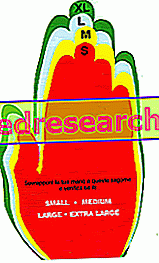Related articles: Burns
Definition
Burns are more or less extensive lesions of the skin or other underlying tissues. They are caused by thermal contact (flames, hot liquids, hot solid objects or steam) or by the action of chemical substances (muriatic acid, ammonia, caustic soda, etc.). Electric current and exposure to radiating agents, including ultraviolet solar radiation, can also produce the same effect.
Burns are classified based on the depth and percentage of the total body surface involved:
- 1st degree: limited to the epidermis;
- 2nd degree of superficial thickness: they involve a part of the dermis;
- 2nd degree with intermediate thickness: involving the papillary dermis;
- full thickness or 3rd degree: they extend through the entire dermis and into the underlying fat.
Most common symptoms and signs *
- Anuria
- Asthenia
- Muscular atrophy
- Increase in the ESR
- bubbles
- Swollen arms
- Burning to the tongue
- ketonuria
- Dehydration
- Dyspnoea
- Ocular pain
- Ectropion
- Edema
- Entropion
- Erythema
- erythrocytosis
- eschar
- blisters
- Glycosuria
- Glossitis
- Eyelid swelling
- Increased blood urea
- Hypercapnia
- Hyperglycemia
- hyperkalaemia
- Hypocalcemia
- Hypoaesthesia
- Hypophosphatemia
- Hyponatremia
- undernourishment
- Hypoxia
- Hypotension
- Hypothermia
- Muscular hypotrophy
- Hypovolemia
- Leukopenia
- Lymphedema
- Inflated tongue
- lipotimia
- marasma
- oliguria
- Pallor
- Paresthesia
- thrombocytopenia
- presyncope
- itch
- Red Dots on the Tongue
- Rhabdomyolysis
- Scales on the skin
- Confusional state
- Cold sweating
- trichiasis
Further indications
Symptoms depend on the depth of the burn, the extent of the lesions and the affected area.
The 1st degree burns are the mildest: they appear as lesions limited to the most superficial layer of the skin; determine the appearance on the skin of a simple redness (erythema) accompanied by local pain and burning. They heal spontaneously within a few days, without leaving scars.
Unlike the previous ones, 2nd degree burns ( superficial thickness ) are deeper (they affect the epidermis and the underlying tissue layer); they cause intense skin inflammation, swelling and formation of fluid-filled blisters (flittene or bubbles). Healing is very slow, but spontaneous and with a favorable outcome.
2nd degree burns ( deep partial thickness ): they are less painful than many superficial burns. The lesions can be white, red or reddish-white spots. Bubbles or fluids may form; these burns are usually dry, do not tend to heal or repair very slowly (it takes at least 3-4 weeks). Scarring is often severe.
The 3rd degree burns ( full thickness ) represent the most serious lesions, as there is a deep involvement of the tissue. There is no pain, due to the destruction of nerve endings (anesthesia or hypoesthesia). The skin appears black and charred, brown or white marble, dry and hard to the touch. Healing takes a long time and leaves permanent scars.
Burns can cause both systemic and local complications. The main factors that contribute to these consequences are the rupture of the integrity of the normal epidermal barrier and the loss of fluids from the burned tissue. Systemic complications can result from deep burns or involving large areas of body surface; the most common are hypovolemia, infection of damaged tissues, concomitant presence of major trauma and possible damage from smoke inhalation. The loss of heat, then, can be significant: the thermoregulation in the damaged dermis is absent, particularly in the exposed lesions (hypothermia). Electrolytic deficits and metabolic acidosis may also develop. Local complications include, instead, eschar and scarring. The eschar is a necrotic tissue caused by deep burns; if it is constrictive it limits the expansion of tissues in response to edema and causes local ischemia. The scars, on the other hand, derive from spontaneous healing; in some individuals keloids are formed.
Early medical intervention is almost always necessary. Treatment of burn injuries is based on the use of topical antibiotics, regular cleansing and, sometimes, skin grafting.



